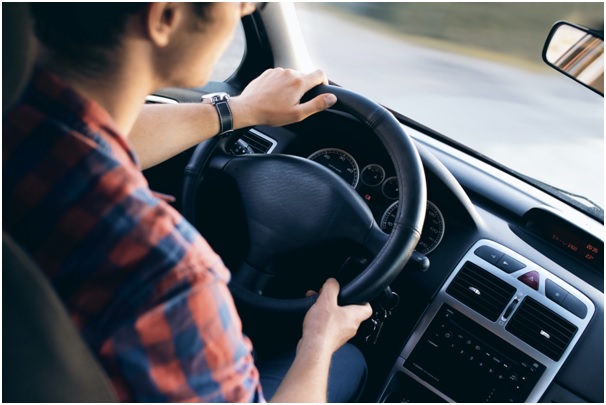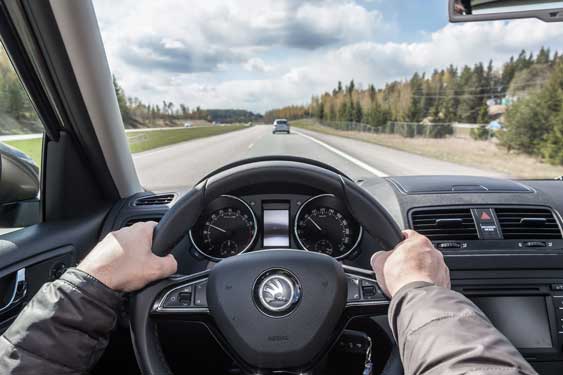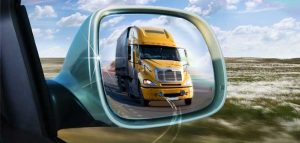The roads these days may require you to be a good defensive driver. When you are driving, you should always have some defensive driving techniques that you know, because you may need them one day. Being a defensive driver can keep you out of an auto accident. Here are some defensive driving tips to help you become a better, safer driver.

1. Be aware
Just being aware of your surroundings and space makes you a better defensive driver. How many times has a light turned green and you will just cruise through the intersection without looking for that one person who will run the red light. Accidents can be avoided if people practiced defensive driving. True, the accident might not have been your fault, but it could have been prevented through good defensive driving techniques.
Many drivers are unaware of their surroundings, they just drive from point a to point b, not paying attention to anything around them. How many of us pulled up to a red light and don’t leave enough space for us to get out of trouble if trouble starts. Be a good defensive driver and leave plenty of space between you and the car in front of you.
Use Your Mirrors
Regularly check your mirrors to be aware of the traffic around you. Be particularly mindful of blind spots and adjust your mirrors properly. Ensure that the driver behind you is maintaining a safe following distance as well. If they are tailgating, consider changing lanes to allow them to pass.
Be Cautious at Intersections
Intersections are common locations for accidents. Look both ways before entering an intersection and be cautious even if you have the right of way.
Obey Traffic Rules
Follow speed limits, obey traffic signals, and adhere to road signs. These rules are in place to ensure the safety of all road users.
Be Predictable
Signal your intentions by using your turn signals in advance. This helps other drivers anticipate your actions and reduces the likelihood of misunderstandings.
Scan the Road Ahead
Look ahead to identify potential hazards, such as stopped traffic, pedestrians, or obstacles. This gives you more time to react appropriately.
Adapt to Road Conditions
Adjust your driving to match the current road and weather conditions. Reduce your speed in adverse weather and be cautious in construction zones.
Avoid Aggressive Driving
Stay calm and patient on the road. Avoid aggressive behaviors like tailgating, excessive speeding, and road rage.
Take Breaks on Long Trips
Fatigue can impair your reaction time and decision-making. If you’re on a long trip, take breaks to stay alert and focused.
Check Blind Spots
Before changing lanes, check your blind spots by looking over your shoulder. Relying solely on mirrors may not give you a complete view.
Anticipate the Actions of Others
Try to predict what other drivers might do and be prepared to react accordingly. Defensive driving is about being proactive and taking steps to avoid potential problems.
2. Escape Path
You can’t predict what a car is going to do around you, but you could be prepared for what that car might do. I can’t tell you how many times a car has come over into my lane and I had to merge over into another lane or the emergency lane so they would not hit me.
If I was not paying attention, they would have sideswiped me. Be aware of the cars around you and leave yourself an escape path if you can so you can get out of trouble.
Carjacking cases are on the rise, and you could get trapped in a situation you can’t get out. Defensive driving is making sure you have a good escape path at red lights, and anywhere you go to where you are stopped for a period.
Creating an escape path while driving involves staying aware of your surroundings and being prepared to react quickly to potential hazards. Here are some tips for creating an escape path.
Maintain Situational Awareness
Continuously scan the road ahead, checking mirrors and blind spots. Be aware of the positions and movements of other vehicles around you. Look for potential hazards, such as erratic drivers, pedestrians, or obstacles in the road.
Identify Escape Routes
Always be aware of open spaces to your sides, shoulders, and other lanes. Know where you can move your vehicle in case you need to avoid a collision or obstacle.
Plan for the Unpredictable:
Anticipate the actions of other drivers and be prepared for unexpected maneuvers. Consider what you would do if a vehicle suddenly swerved into your lane or if a pedestrian stepped into the road.
Have a Cushion at Intersections:
When stopped at an intersection, leave some space between your vehicle and the one in front. This provides room to maneuver if a vehicle approaches from behind too quickly.
Be Mindful of Escape Routes on Highways
On highways, be aware of exit ramps and shoulders as potential escape routes. If traffic slows or stops unexpectedly, look for openings in adjacent lanes to move into if needed.
Avoid Boxed-In Situations:
Try not to position yourself in a way that leaves you surrounded by vehicles with limited escape options. When stopped in traffic, leave enough space in front of your vehicle to maneuver if necessary.
Be Ready to Brake or Accelerate:
Keep your foot near the brake pedal so you can quickly slow down if needed. Be prepared to accelerate to avoid a potential collision.
Practice Defensive Driving
Stay focused on the road and avoid distractions. Stay calm and composed to make better decisions in emergency situations.
Remember, creating an escape path is about being proactive and prepared for the unexpected. By staying vigilant and anticipating potential hazards, you increase your chances of safely navigating challenging situations on the road.
3. Maintain a safe distance

Did we say it enough? If you are in a large city, you can see cars are bumper to bumper. Most rear end auto accidents are caused by failure to keep your distance from the car in front of you. A good defensive driver would keep once car length for every ten miles an hour. Increasing your distance will give you time to apply your brakes and slow down if anything happens to the car in front of you.
In cities with large volumes of traffic this is a huge issue. It seems everyone is in a hurry to get somewhere. Keeping your distance from the car in front of you would make you a better defensive driver.
Maintaining a safe following distance is a crucial aspect of defensive driving. The appropriate following distance gives you time to react to sudden changes in traffic and road conditions. Here’s a more on creating and maintaining a safe distance:
The Three-Second Rule
One common method for determining a safe following distance is the three-second rule. Pick a fixed object on the road, such as a sign or a tree. When the vehicle in front of you passes that object, count “one-thousand-one, one-thousand-two, one-thousand-three.” If you reach the object before finishing the count, you’re following too closely. Increase your following distance if this is the case.
Increase Distance in Poor Conditions
Extend your following distance in adverse conditions such as rain, snow, or fog. The increased distance allows for additional reaction time if you need to stop suddenly.
Account for Larger Vehicles
If you’re behind a large vehicle, like a truck or a bus, increase your following distance. Large vehicles may have longer stopping distances, and being too close reduces your visibility.
Maintain a Cushion
Avoid tailgating. Keep a comfortable cushion of space between your vehicle and the one in front. This not only provides safety but also reduces stress and tension during your drive.
Watch for Brake Lights
Pay attention to the brake lights of the vehicle in front of you. If you see brake lights, come on, start slowing down early to maintain a safe distance.
Adjust for Speed
The faster you travel, the more distance you should maintain. In general, the higher your speed, the more time and space you need to stop.
Be Mindful of Weather Conditions
Poor weather conditions, such as rain or snow, can significantly affect stopping distances. Adjust your following distance accordingly.
Anticipate Stops
If you see a red light or traffic slowing down ahead, start easing off the accelerator and prepare to brake. Anticipating stops allows you to slow down more gradually.
4. Avoid Distractions
Minimize driving distractions. Distracted driving accidents are on the rise. I’m sure we have all been guilty of looking for our phone that has fallen in the crack of the seat. Or, reading a text while we should have our eyes on the road. You can’t sit behind the wheel and be fooling with the GPS, drinking coffee, and making a phone call while you are driving.

I was riding in a new Chevy Tahoe this weekend; the GPS would not let you enter an address unless it was in Park. The passenger could not even enter the address. The DVD will not play in the front; it will only play in the back. There are hacks for the systems in that vehicle that would allow you to do those things while you are driving. I assume Chevy wants to limit its liability. In case a distracted driving accident takes place with someone using its equipment.
Here are some tips to help you stay focused while driving:
Put Your Phone Away
Turn off your phone or switch it to silent mode before you start driving. Consider placing your phone in the glove compartment, back seat, or another out-of-reach location.
Use Do Not Disturb Mode:
Enable “Do Not Disturb” mode on your phone to silence notifications while driving. Some smartphones have features that can automatically activate Do Not Disturb when in motion.
Preprogram GPS and Music:
Set your GPS destination and choose your music playlist or radio station before you start driving. Avoid adjusting your GPS or music while driving.
Secure Loose Items:
Ensure that any loose items, such as groceries, bags, or electronic devices, are securely stored to prevent them from becoming distractions in the car.
Limit Passengers:
Having too many passengers or engaging in conversations can divert your attention from the road. If possible, limit the number of passengers or have in-depth discussions about it when the car is parked.
Eat Before or After Driving:
Try to eat your meals before you start driving or pull over to a safe location if you need to eat on the go. Eating while driving can be distracting and increase the risk of accidents.
Avoid Grooming
Finish grooming activities such as shaving, applying makeup, or fixing your hair before you get in the car. Grooming while driving is dangerous and diverts your attention from the road.
Secure Children and Pets
Ensure that children and pets are properly secured in appropriate restraints or carriers. Address their needs before driving to minimize distractions.
Stay Focused on the Road
Keep your eyes on the road and regularly scan your surroundings. Avoid looking at billboards, reading, or focusing on non-driving-related activities.
Pull Over for Urgent Matters
If you need to make a call, respond to a message, or address an urgent matter, pull over to a safe location before doing so.
Educate Passengers
Encourage passengers to avoid distracting behaviors and help keep the driving environment calm and focused.
Remember, safe driving requires your full attention. By minimizing distractions, you not only protect yourself but also contribute to the overall safety of the road. Develop good habits and be a responsible and focused driver.
With the technology we have today, distracted driving has become a major issue. They even have a special place for it in an accident report now under contributing factors, you guessed it, it says distracted driving. Try not to be distracted and use good defensive driving techniques.
5. Look ahead!
When you are driving on a long open interstate, it’s easy to get distracted. You are bored, maybe you are tired. Being a good defensive driver means looking ahead, a long way ahead. This helps you prevent things that could happen or will happen.
If a car hits something on the roadway and you are not paying attention, you could run into the back of them. Or, hit the debris in the road they were trying to miss. Maybe there is a tractor trailer tire lying in the middle of the interstate. If you are not looking ahead, you are not being a good defensive driver. Furthermore, you may not see it until it’s too late.
Looking ahead for safety while driving is a fundamental principle of defensive driving. Being aware of the road ahead allows you to anticipate potential hazards and react in a timely manner. Here are some key tips for focusing on what lies ahead while driving:
Maintain a Forward Focus
Keep your eyes on the road ahead, looking at a point far down the road. Avoid fixating on one spot or staring at the vehicle in front of you.
Scan the Road
Continuously scan the road ahead, checking for potential hazards, changes in traffic flow, and upcoming intersections. Use your peripheral vision to be aware of what’s happening on the sides of the road.
Look Beyond the Vehicle in Front
Instead of focusing solely on the vehicle directly in front of you, look through it to see what’s happening further ahead. This gives you a broader view of the road.
Anticipate Traffic Flow
Pay attention to the movement of traffic. Anticipate changes in speed, potential lane changes, and interactions between vehicles.
Watch for Brake Lights
Keep an eye on the brake lights of the vehicles ahead. If you see brake lights, come on, start to slow down early to avoid sudden stops.
Identify Potential Hazards
Look for potential hazards such as construction zones, pedestrians, bicyclists, and animals on or near the road. Be aware of road signs and signals that indicate upcoming changes or challenges.
Plan for Intersections
Approach intersections with caution. Look left and right, even if you have the right of way, to ensure that other drivers are following traffic rules.
Monitor Traffic Patterns
Watch for patterns in traffic flow and be prepared to adjust your speed and position based on the behavior of other drivers.
Adjust to Road Conditions
Be mindful of the road surface, weather conditions, and visibility. Adjust your speed and driving style accordingly.
Stay Proactive
Be proactive in your driving, anticipating potential issues and planning your responses in advance. Avoid becoming complacent or overly reliant on technology.
Use Headlights Appropriately
Use headlights not only at night but also in low-visibility conditions. This increases your visibility to other drivers and helps you see the road ahead better.
By consistently looking ahead and staying vigilant, you enhance your ability to respond to changing road conditions and unexpected situations. Defensive driving is about being proactive and prepared, and focusing on what lies ahead is a crucial component of that approach.
Motorcyclist: The best defensive drivers
I always said the best defensive drivers are ones that have ridden motorcycles. Why is this? When you ride a motorcycle, you must be the best defensive driver on the planet. Furthermore, it only takes one accident for a motorcyclist to realize this. Motorcyclists are always scanning the road and the traffic in front of them, they are looking for anything in the roadway.

Motorcyclists who are being defensive drivers, are looking at other vehicles. And, looking for ones that are not paying attention to them or do not see them. Cars will merge into their lane because they never check their blind spot. Motorcyclists must be on the lookout for everything that could cause them harm and be extremely good defensive drivers.
They do not have 2 tons of steel surrounding them, to protect them in case of an accident. We can run over debris in the road and may have no damage to our cars, they cannot, and they will crash. When I used to ride, I’d never ride in traffic. I would always ride through it. Because you can’t trust that the guy in the car next to you is a defensive driver.
Remember, defensive driving is not just about your own skills; it’s also about being considerate of other road users. By adopting these techniques, you can contribute to a safer driving environment for everyone.


